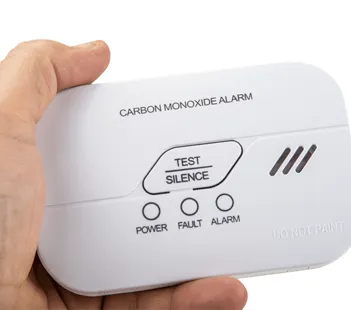January 01, 2017

Using your fireplace, wood stove or other fuel-fired devices can be a great way to provide heat and comfort during the cold winter months. Before you use your device, it is important to follow a few basic safety steps to avoid a dangerous situation.
As stated by the National Fire Protection Association, the second leading cause of all home fires was heating equipment (14%), and failure to properly clean such heating equipment was the leading factor.1 Starting a fire of any type demands respect; however a few simple steps can greatly reduce the risks so you can safely enjoy your fire.
Before you start the first fire of the year
- Install or test your smoke and carbon monoxide detectors. It is also a good idea to have extra batteries on hand for each.
- Have an expert inspect your chimney to make sure there isn't buildup that would block smoke such as leaves, dirt or creosote (a highly flammable buildup from incomplete burning of wood and coal). Installing a cap on your chimney can help keep materials out during the off season.
- Have a fire extinguisher nearby that is charged and recently tested.
- Create a plan for your family in case of a fire.
- Clean your chimney and move any items away from the fire area.
- Talk to your children and make sure they understand that fires can be dangerous.
Now that everything is clean and prepared
- Keep the glass doors open and use a metal grate while the fire is burning to avoid sparks.
- Make sure that the flume (opening to the outside) on your chimney is open.
- Only use fireplace tools to tend to the fire.
- Never leave the fire unattended.
- Never burn garbage, plastics or glass, and don’t use gas or lighter fluid to start your fire.
- Use seasoned firewood or store bought logs and place logs at the rear of the device on an appropriate grate.
- When finished, make sure the fire is completely out and cooled. Dispose of cooled ashes in a metal container at least 10 feet from your home or other buildings.
Download Home Heating Safety Tips PDF (English/Spanish)
1 National Fire Protection Association. U.S. Home Heating Equipment Fires Fact Sheet


